During World War II, roughly 280,000 men and women from Louisiana served in the Armed Forces. There were over 30 military installations in the state, in addition to more than 40 prisoner of war camps. Louisiana industry supplied the Allied war machine with vital materials such as oil, synthetic rubber, and ships of all sizes. Civilians collected scraps, grew Victory gardens, and bought war bonds to build aircraft. Louisianans were all in it together, and this series highlights when the Pelican State went to war.
By the summer of 1944, the tide had turned in the Battle of the Atlantic. Although German U-boats still hunted Allied convoys, the US Navy was using hunter-killer anti-submarine task groups with good results. On June 4, 1944, a hunter-killer group based around the escort carrier USS Guadalcanal (CVE-60) under the command of Captain Daniel V. Gallery, Jr., captured the German submarine U-505. They did what no other US naval force had done since the nineteenth century—they boarded and captured an enemy vessel at sea.
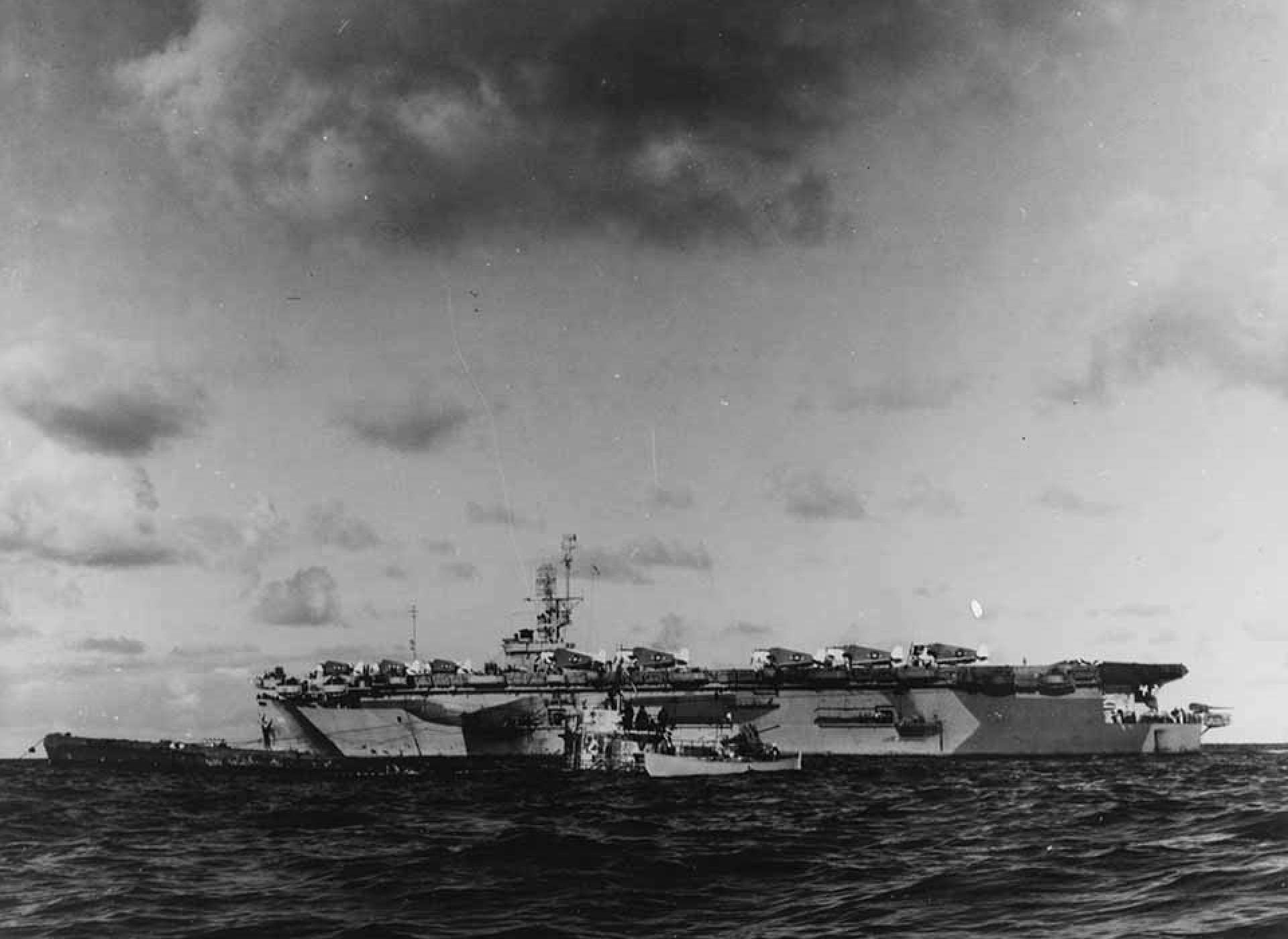
The German submarine U-505 lies near USS Guadalcanal after being captured by the hunter-killer group. Courtesy of Naval History and Heritage Command.
The hunter-killer group set out from the United States in mid-May to conduct an anti-submarine patrol near the Canary Islands, eventually sailing south in search of U-boats. After weeks with no contact with enemy boats and low on fuel, the group headed for Casablanca. Barely 10 minutes after making the course change for North Africa, a destroyer escort in the group, USS Chatelain (DE-149) made sonar contact with a submarine only 800 yards away.
The convoy came alive as word of the contact came over the Talk Between Ships (TBS) radio. Aircraft launched from Guadalcanal sighted the boat and fired on it. Chatelain launched depth charges, set for shallow detonations. As the Wildcat fighter planes from Guadalcanal watched, massive geysers of water erupted where the depth charges exploded. One of the air crew came over the radio, yelling excitedly “You struck oil! Sub is surfacing!” U-505 began to surface, damaged from the depth charging, just six and a half minutes after sonar contact had been made.
U-505 was without lights, her electrical machinery was kaput, and her rudder was jammed, forcing her to lumber into a wide turn. But the fight wasn’t over. The Chatelain opened fire on the submarine, joined quickly by USS Pillsbury (DE-133) and the Wildcats in the air. The 505’s commanding officer, Oberleutnant Harald Lange, was wounded in the barrage of bullets and believed his boat to be fatally damaged. With the boat taking on water Lange ordered the crew to abandon ship. The crew followed the order so quickly that measures necessary for scuttling the boat were left incomplete. Most importantly, the Enigma machine and code books were not destroyed.
Just minutes later, the Chatelain fired a torpedo at the 505, believing her slow turn to be an attack. The boat, however, was abandoned and just minutes later a cease fire was called. An eight-man boarding party was called from Pillsbury, led by Lieutenant (junior grade) Albert L. David. As the boarding party reached the boat, they faced the very real possibility of the boat exploding beneath their feet from the scuttling demolitions set by the abandoning crew. After first checking the boat was empty, the boarding party began closing valves and plugging leaks to stem the flow of water, disconnecting demolition charges, and gathering up vital documents such as maps and code books. Lieutenant David was later awarded the Medal of Honor for leading the boarding party and successfully saving the U-boat.
-

Visible in the lower portion of the photo is the boarding party from Pillsbury coming alongside U-505. Courtesy of Naval History and Heritage Command.
-

The boarding party from Pillsbury on deck working to secure U-505. Courtesy of Naval History and Heritage Command.
As the boarding party saved the 505 from a watery grave, Chatelain and USS Jenks (DE-665) began to do the same for her survivors, plucking 58 men from the water. Only one had been killed in action, his body left behind on the deck of the U-boat. The 505 was dried out by a creative salvage party that disconnected the boat’s engines from the motors, allowing the shafts to turn while the boat was towed which charged the batteries. With the batteries charged, electrical power was restored, and the boat’s own pumps were used to clear the last of the seawater. Guadalcanal took her under tow for three days until a fleet tug met the group and took the captured U-boat in tow. Two weeks later, under immense secrecy, the U-boat was towed into Bermuda.
-

Survivors from U-505 climb a ladder to board Guadalcanal. Wrapped in a blanket is the only sailor killed in the capture, a German sailor hit by gunfire. Courtesy of Naval History and Heritage Command.
-

Now prisoners of war, sailors from U-505 were given US survivor issue uniforms aboard Chatelain. Courtesy of Naval History and Heritage Command.
The code books found aboard U-505 had a significant impact on Allied shipping. American cryptanalysts were able to occasionally break special coordinate codes which had previously been unbreakable. This created better intelligence on U-boat patrol zones, allowing Allied convoys to avoid heavily patrolled areas, while focusing the efforts of hunter-killer groups in those areas.
The crew had survived the ordeal with only three wounded and one killed. The 58 survivors were moved under immense secrecy. Allied leaders wanted the Germans to believe the U-boat had been sunk with all hands. If word got out that the crew had been captured, German intelligence might grow suspicious that Enigma codes had been compromised. The crew was brought to the United States and put into an isolated section in a prisoner of war camp.
But this is a series on Louisiana in World War II, so what does a captured German submarine have to do with Louisiana? The answer comes together in Ruston, a small town in the northern part of the state.
In 1942, 770 acres west of town were purchased to build a prisoner of war camp. The site was selected for several reasons, but most importantly was the site's proximity to a major railway. A local company, T.L. James & Company, was contracted to build the camp based off of a standard plan of tar paper covered barracks buildings, facilities such as a kitchen, mess hall, and latrines, as well as all of the necessary housing and offices for camp administration. As was standard in most prison camps, officers and enlisted were housed in separate compounds. The whole facility was fenced in with barbed wire and guard towers. Completed that same year, the camp’s construction cost $2.5 million to build.
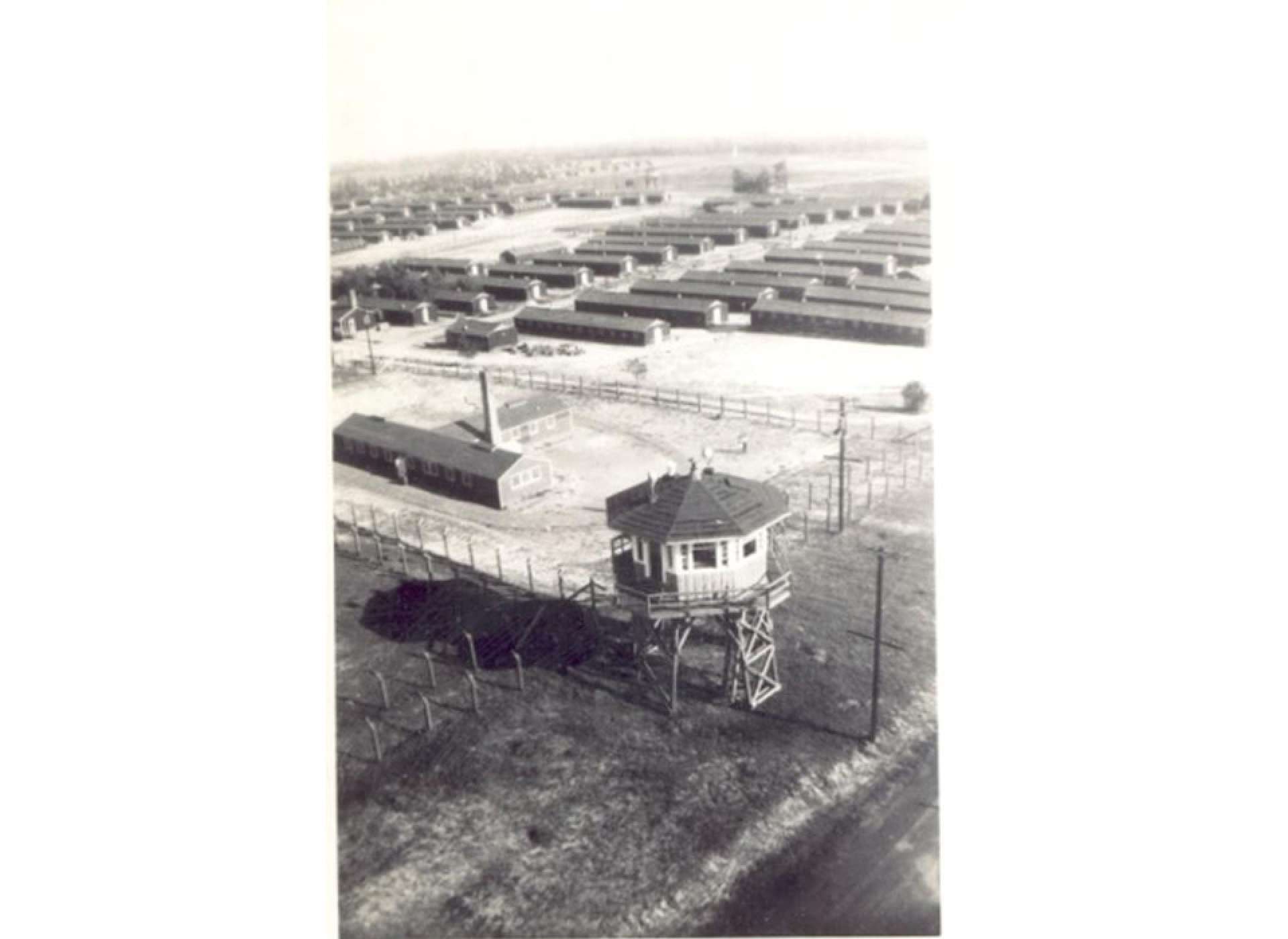
An aerial photograph of Camp Ruston showing one of the guard towers. German escape attempts from POW camps were less frequent than attempts by captured Allied prisoners in Europe. The Camp Ruston Collection, Louisiana Tech University Special Collections.
The first to live at the camp were not prisoners, but women of the Women’s Army Auxiliary Corps (WAAC), as the camp served as the headquarters of the Fifth WAAC Training Center. There, over 3,000 women went through basic training. Arriving in June 1943 were the first 300 prisoners, members of the German Afrika Korps, captured from Field Marshal Erwin Rommel’s elite army in North Africa. They were followed by prisoners of many nationalities, as Germany put more foreign conscripts on the front lines. At its peak, the camp housed over 4,300 prisoners, making it one of the largest in the United States.
In 1944, the crew of U-505 arrived at Camp Ruston. The fact that they were alive had become a matter of military secrecy, and the 58 survivors were put into an isolated section of the camp. Despite the requirements outlined in the Geneva Convention which allowed prisoners to write home and receive care from the Red Cross, the crew of U-505 was held in secret, and their names were withheld from the Red Cross. They were not allowed to write their families. No chances could be taken that knowledge of their survival would come to light. Had they been allowed to write home, they could have alerted German intelligence to the captured code books. The knowledge gained from those books was saving American lives, and despite the rights given to prisoners, the US military could take no chances.
For the other prisoners in Camp Ruston, life was very different. The music from bands and choirs filled the air. Artists painted, carpenters made furniture, others created miniatures of buildings and monuments back home. The art and furniture made by prisoners can still be found in some homes in Ruston today. Athletics were encouraged, and German prisoners even learned the American sports of baseball and basketball. Highly educated prisoners taught classes on a variety of subjects, enhanced with books from nearby Louisiana Tech University. Those prisoners not involved in work to keep the camp running worked for local farmers, harvested timber, and built public works. They were paid in “scrip,” camp currency they could spend at the camp’s canteen. There they could buy an assortment of toiletries, magazines, and even beer. Many befriended the locals they worked with, establishing lifelong relationships with “the enemy.”
-

A work party from the camp working on harvesting timber. Note the American guards posing casually with the Axis prisoners. The Camp Ruston Collection, Louisiana Tech University Special Collections.
-

Prisoners in the camp were given materials to be creative with. Many built furniture, but also popular was the construction of miniatures of famous German landmarks, including this one of the Völkerschlachtdenkmal (Monument to the Battle of the Nations) in Leipzig which commemorates Napoleon’s defeat there. The Camp Ruston Collection, Louisiana Tech University Special Collections.
By 1946, the camp was cleared out and the last prisoners repatriated. What a shock the families of the crew of U-505 must have gotten. Long believed lost at sea, they had in fact been secret prisoners in one of the country’s largest prisoner of war camps in the piney hills of north Louisiana. To see more images, documents, and artifacts from the camp, see the Camp Ruston Collection at Louisiana Tech University.
U-505 was eventually towed from Bermuda to the United States. After the end of the war in Europe, the US Navy issued a press release in May 1945, detailing the capture of U-505. The U-boat was used later that year as part of the tour for the Seventh War Loan drive. In 1953, Captain Gallery, who had commanded the hunter-killer group which captured the boat, succeeded in convincing the US Navy to give the submarine to the Museum of Science and Industry in Chicago. The city of Chicago raised the funds necessary to bring the boat to the museum, where she is still on display today.
This article is part of an ongoing series commemorating the 75th anniversary of the end of World War II made possible by Bank of America.
Kali Martin
Kali Martin is a former Research Historian of The National WWII Museum's Jenny Craig Institute for the Study of War and Democracy.
Cite this article:
MLA Citation:
APA Citation:
Chicago Style Citation:
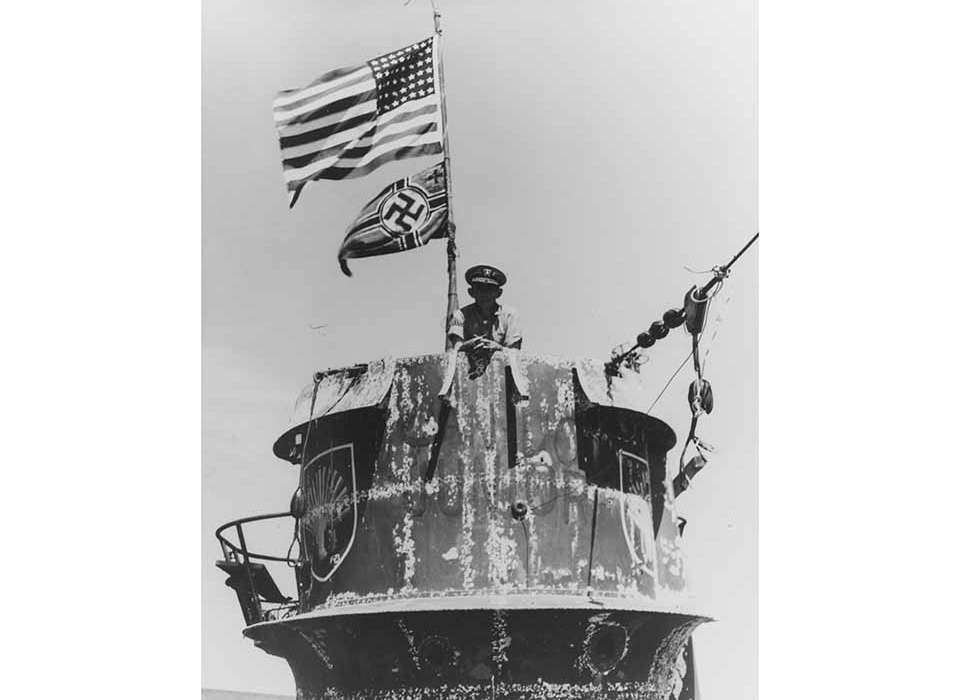
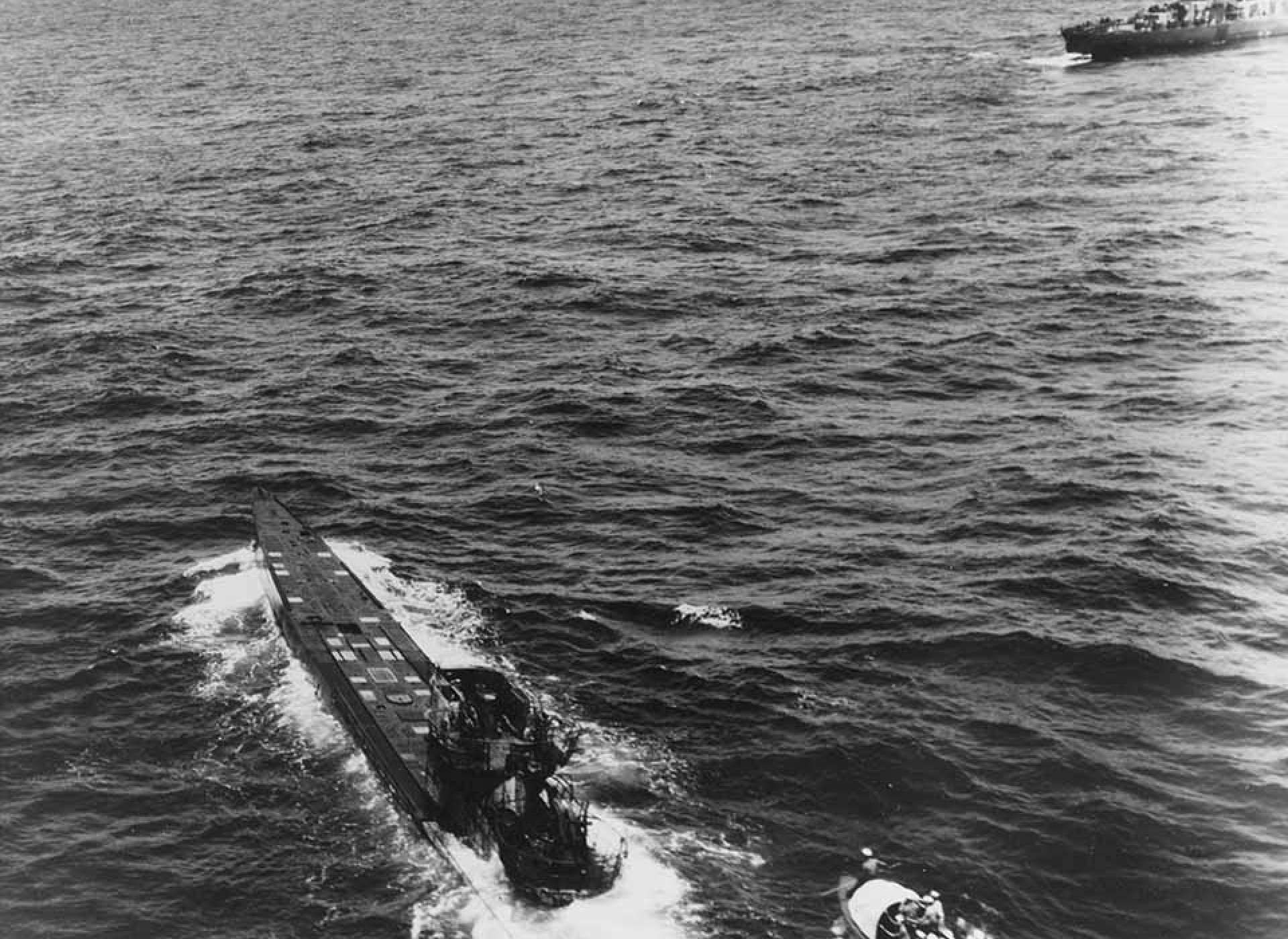
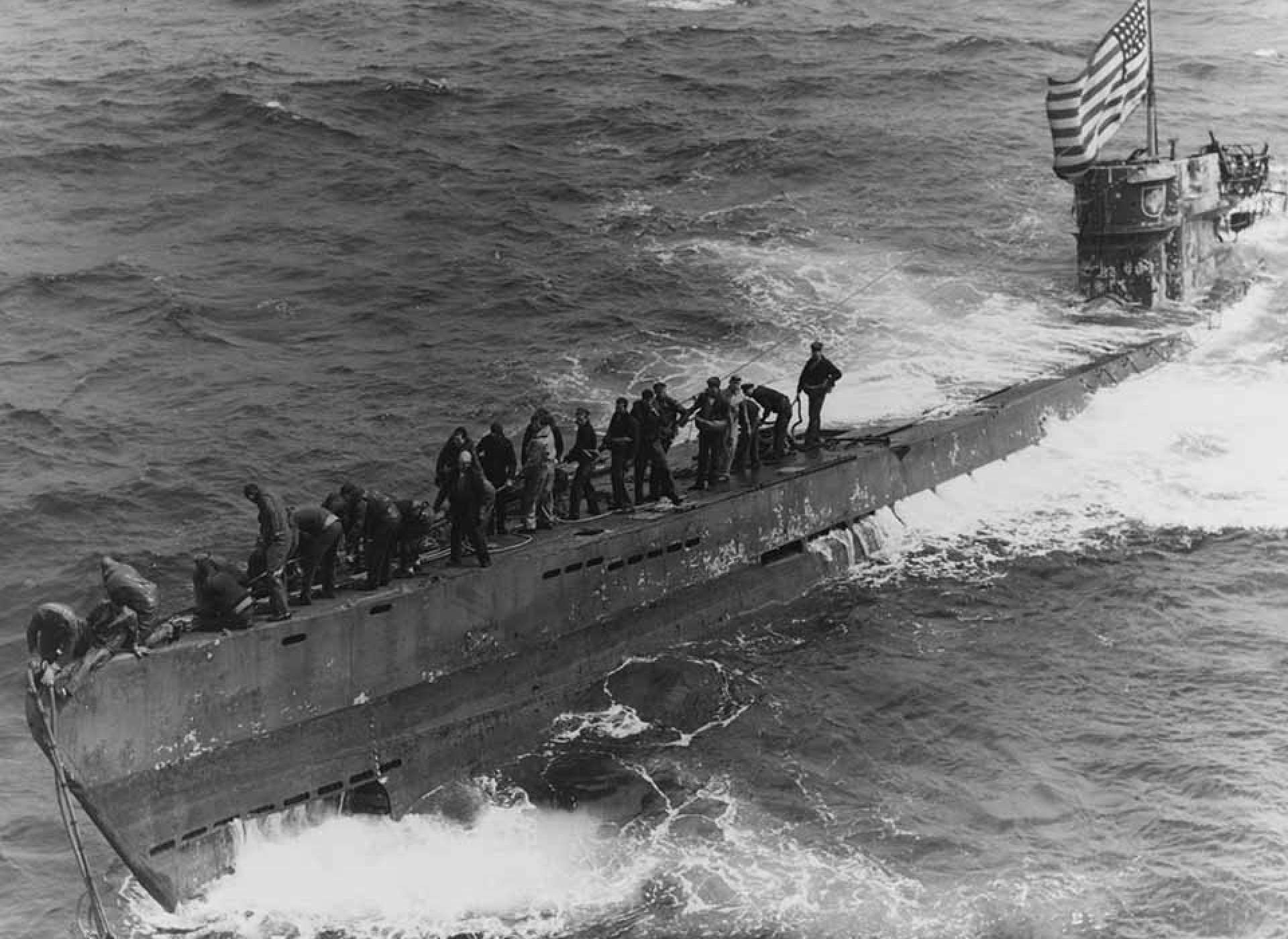
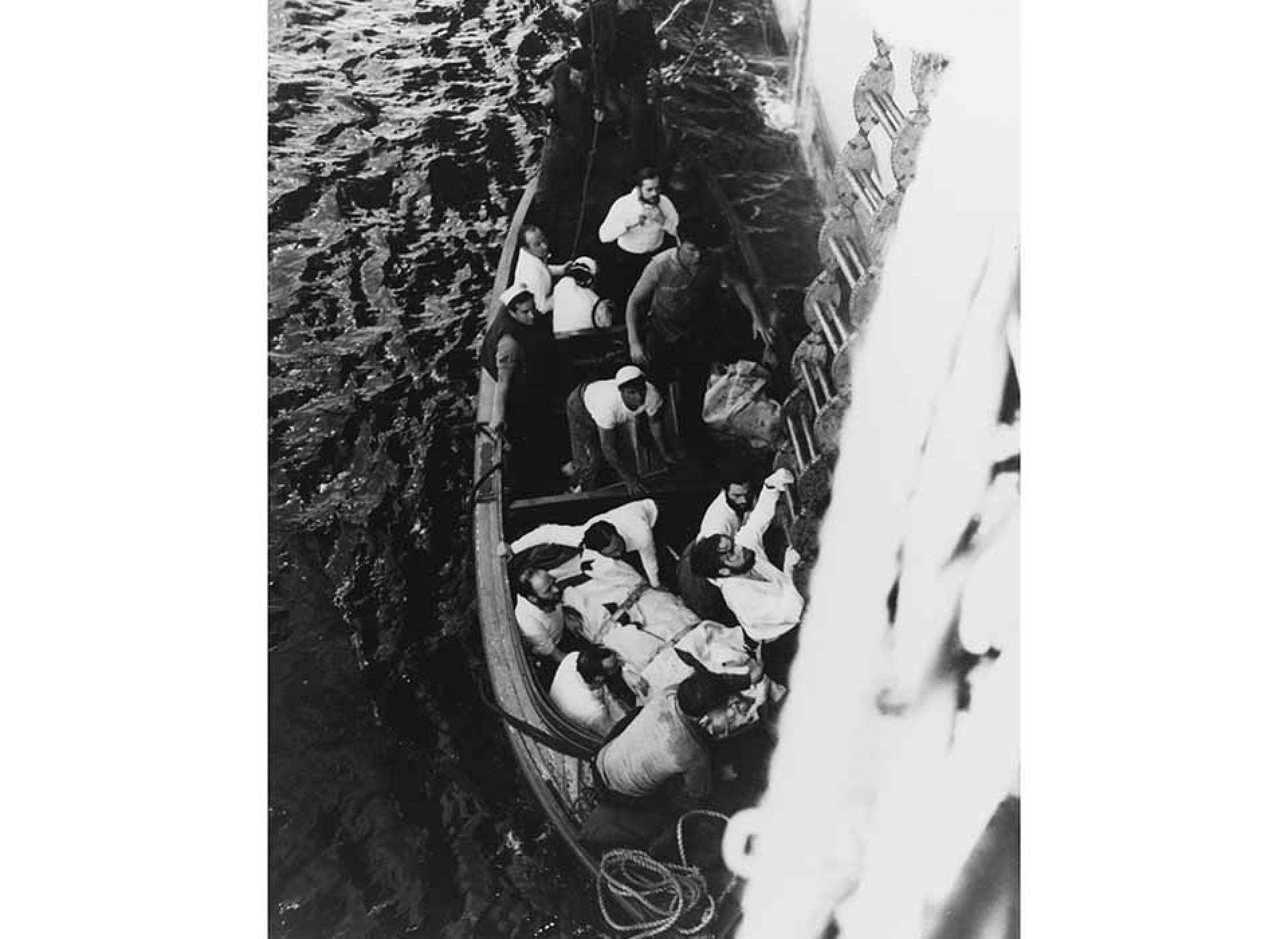
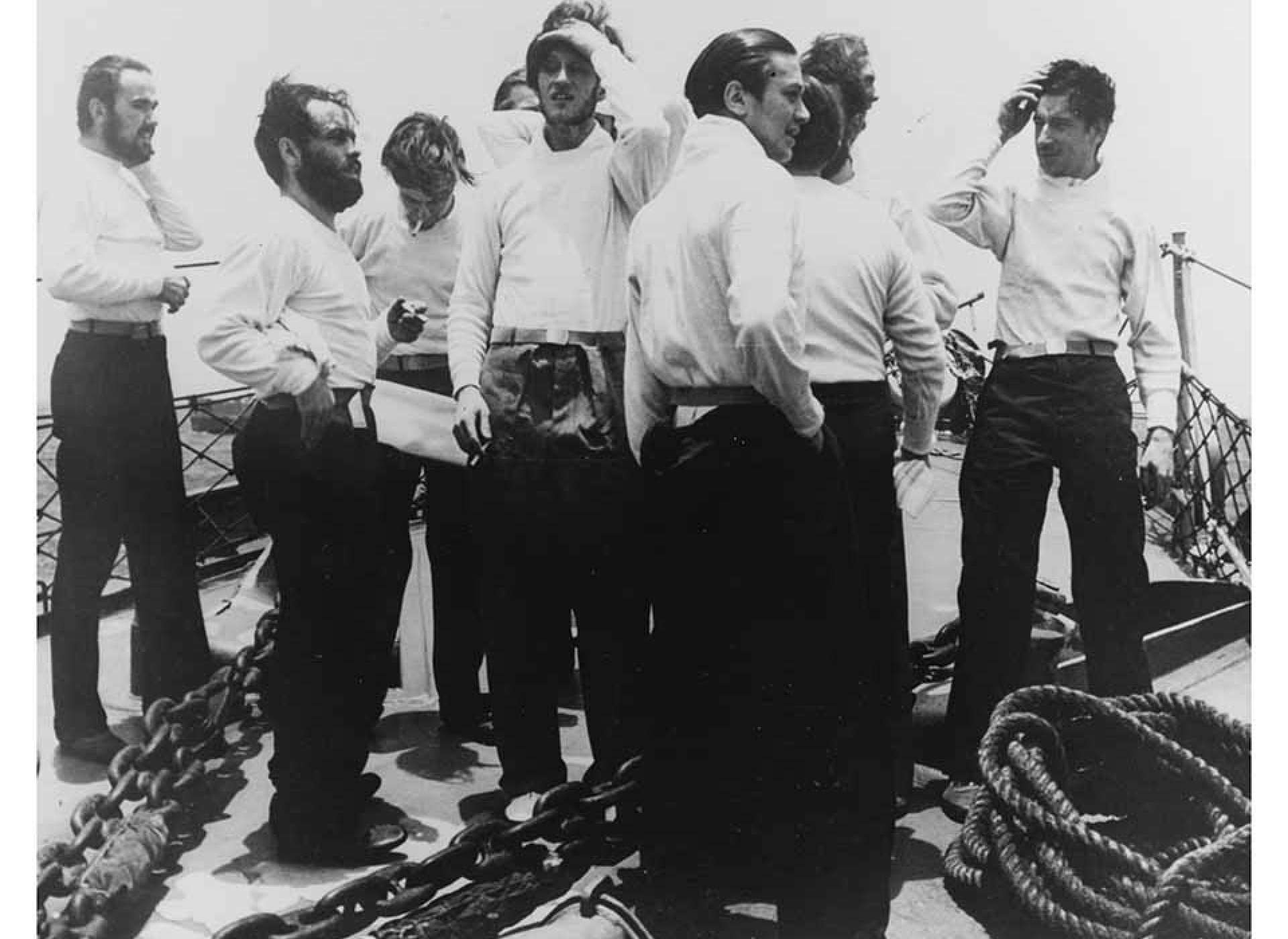
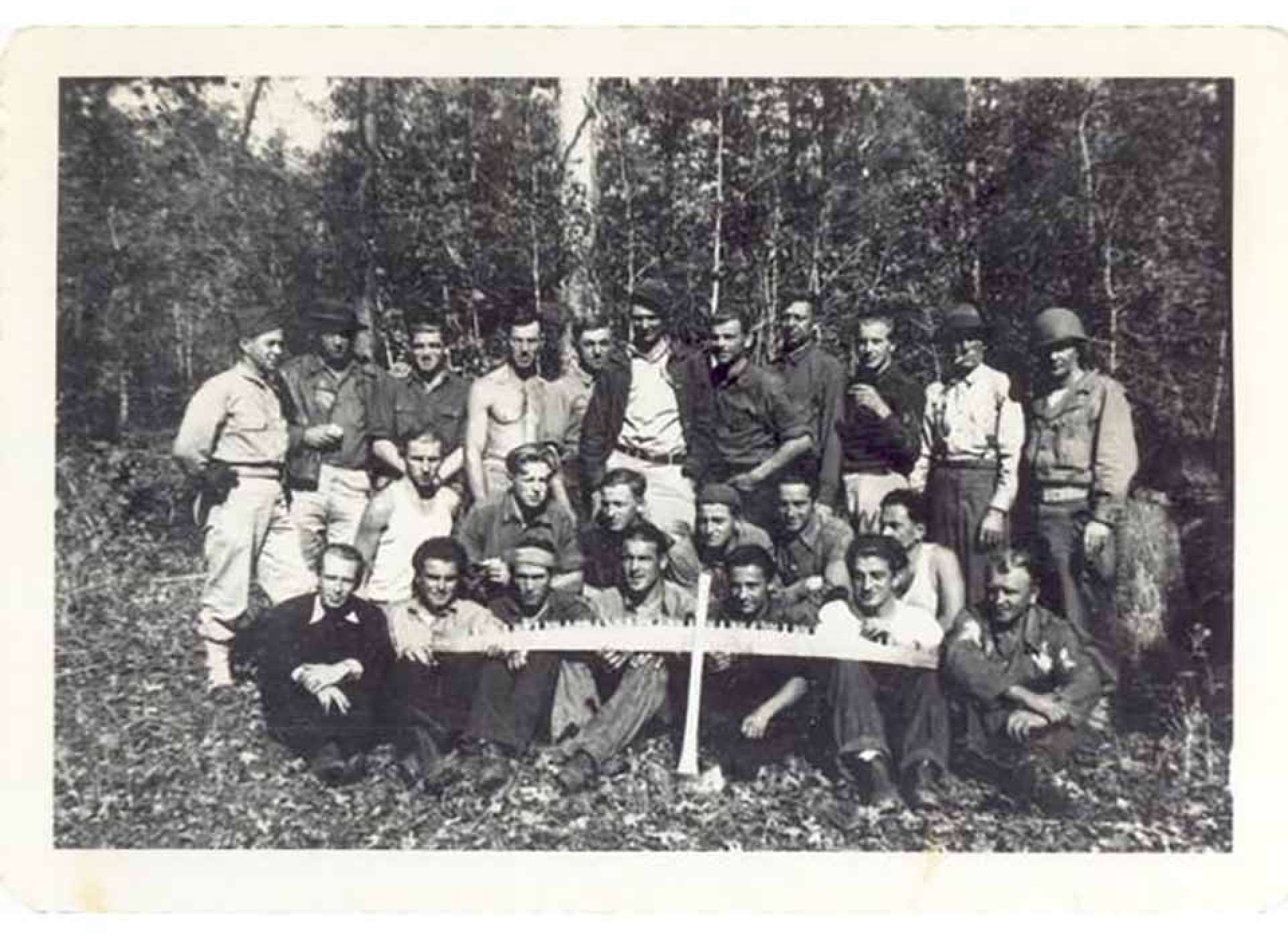
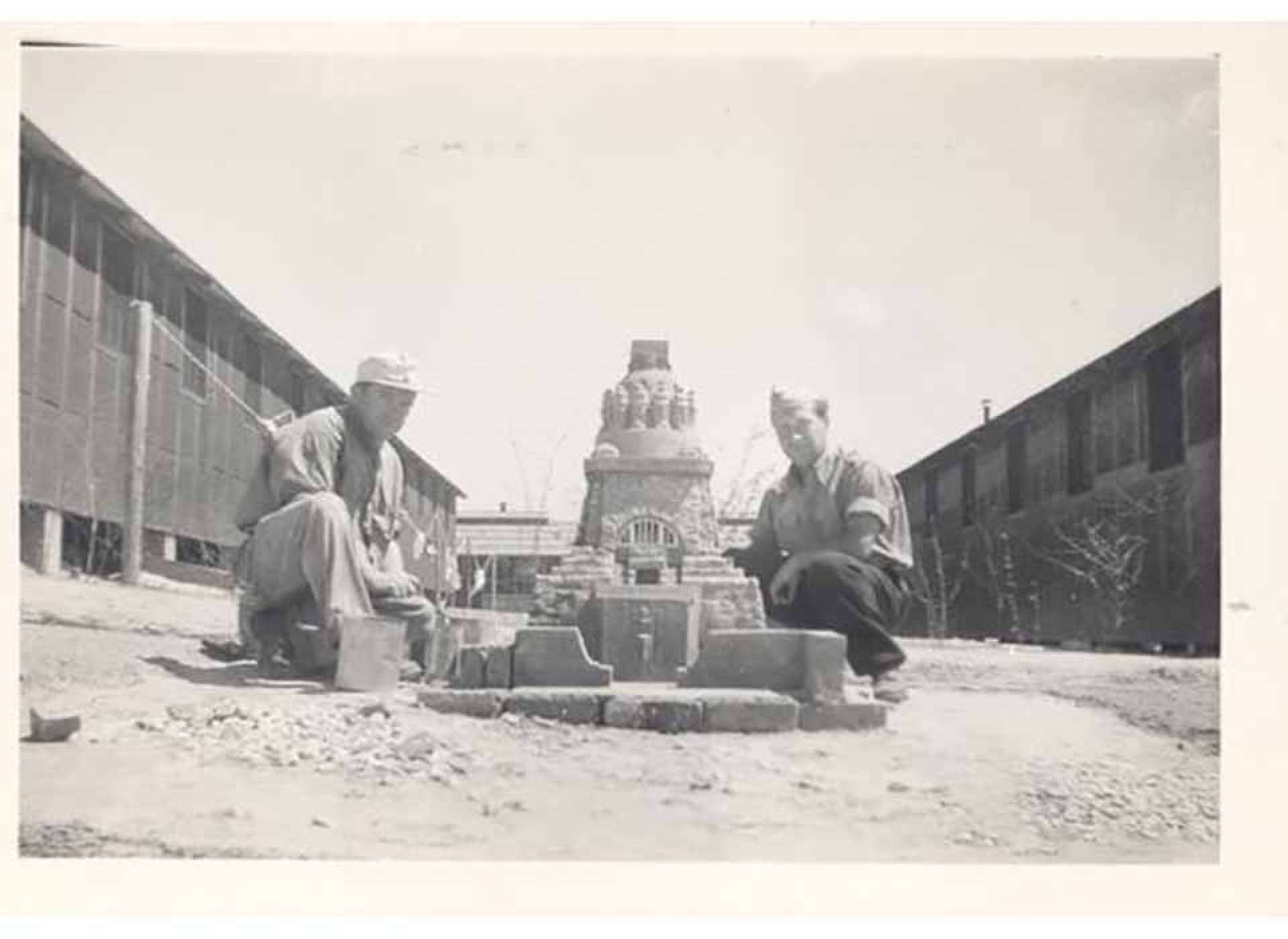






![Max Fuchs, New York City cantor, sings as Rabbi Sydney [sic] Lefkowitz, Richmond, VA, conducts the first Jewish services from Germany.](/sites/default/files/styles/max_650x650/public/2025-10/image1.jpg)


